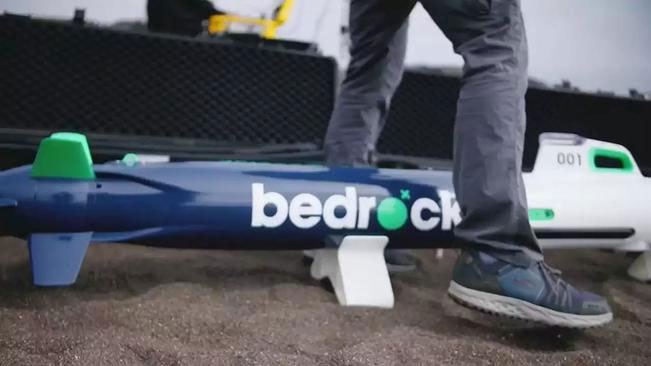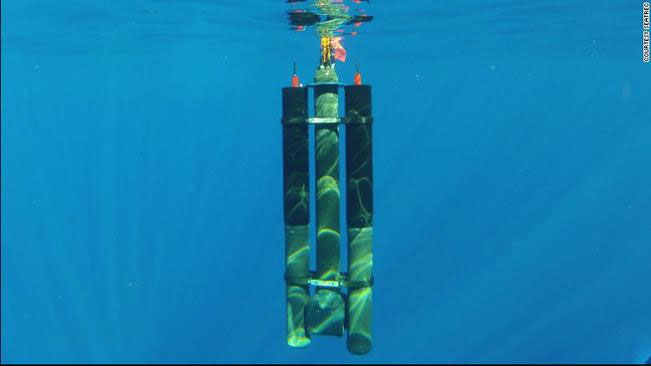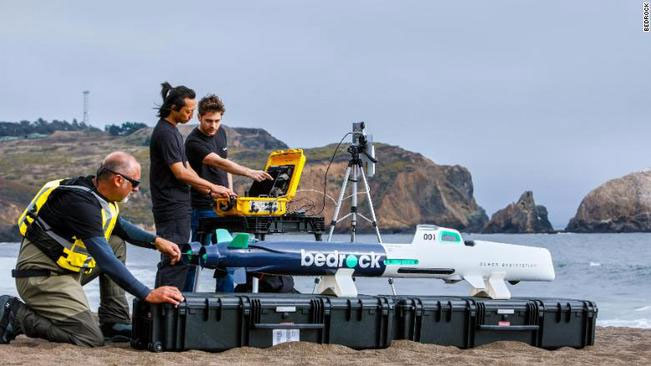For centuries, humanity has explored countless mountains, forests, and deserts. However, the oceans, which cover more than 70% of the Earth’s surface, remain a significant mystery to us. In fact, we know more about the surface of Mars than we do about the oceans on our own planet. Currently, we have only explored about 20% of the ocean’s area.
Gaining a comprehensive understanding of the oceans helps us navigate ships more safely, create climate models, lay underwater cables, build offshore wind farms, and protect marine species—all part of a project called “the blue economy”, which is valued at $3 trillion by 2030.

Gaining a comprehensive understanding of the oceans helps us navigate ships more safely.
Automated robots equipped with sensors allow for faster and cheaper data collection than ever before. However, many of these vehicles operate on batteries, which have limited lifespans, necessitating a return to the ship or shore for recharging. Thus, using these vehicles can be quite challenging in offshore waters.
Seatrec, a five-year-old startup founded by oceanographer Yi Chao, has conquered this challenge. In an interview with CNN, Chao explained that while working for NASA, he developed charging technology for oceanic robots by harnessing “natural temperature changes” in the ocean.
Greener – Cheaper
The power source can be installed directly on the data-collecting robots or on Seatrec’s vessels, and they can use sonar systems to map the surrounding area. Afterward, the robots will return to the surface and send data back to the center via satellite.

Seatrec’s vessels utilize the temperature changes of the ocean to generate operational energy. (Photo: CNN).
As the vessels move between cold and warm ocean waters, the materials inside the power system either melt or freeze, creating pressure that is then converted into heat and generates electricity for the robots to operate.
“They are charged by the ocean, so their operational time is virtually limitless,” Chao noted.
Each research vessel with basic equipment costs around $20,000. Adding Seatrec’s energy system will cost an additional approximately $25,000, Chao stated.
However, this investment allows access to free renewable energy, enabling longer operational durations at sea and providing a vast amount of data at five times lower costs for long offshore missions, Chao shared.
He mentioned that his startup produces fewer than 100 units of equipment each year, primarily for marine research projects, but this technology can be scaled up for broader applications. Seatrec’s energy generation system can also be added to existing mapping equipment to extend their operational range.
Accelerating Progress
According to Jamie McMichael-Phillips, director of the Nippon Foundation-GEBCO Seabed 2030 Project, this new technology could help data-collecting devices reach remote areas of the ocean for mapping purposes.
“One of the significant challenges we face is simply a matter of physics,” McMichael-Phillips explained. “When mapping on land, we can use cameras [or] satellites, but with the ocean, light cannot penetrate the water column. Therefore, the use of sonar systems is very limited.”
The Seabed 2030 Project, launched in 2017, aims to raise awareness about the importance of the ocean floor and set clear goals for researchers and companies in this field: to complete a map of the ocean floor by the end of this decade.
Some companies, such as XOCEAN, conduct ocean exploration from the surface. Another startup, Bedrock Ocean Exploration, claims they can complete seabed surveys ten times faster than traditional methods by using electric autonomous submarines equipped with sonar, cameras, and lasers; afterward, the data is analyzed on Bedrock’s cloud platform.

Bedrock Ocean Exploration uses electric autonomous submarines equipped with sonar, cameras, and lasers. (Photo: CNN).
Challenges Ahead
Despite the increasing number of technologies available for mapping the ocean floor, completing this map still faces logistical and financial challenges.
Chao estimates that around 3,000 Seatrec vessels will be needed to operate over the next ten years to survey the entire ocean. Seatrec has also raised $2 million in investment to expand its energy system production.
However, this is still a modest amount of funding needed to explore the entire ocean. It is estimated that the survey “will require somewhere between $3 to $5 billion,” McMichael-Phillips noted—“which is roughly equivalent to the amount needed to conduct a mission to Mars.”
DiMare, from Bedrock, believes it is time to invest in the very planet we inhabit.
“If we want to continue to keep Earth as a place where humanity can thrive, we need to understand more about what is happening on this planet,” he stated.


















































